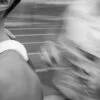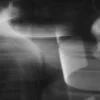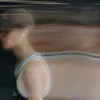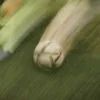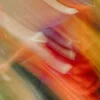Real tennis courts are like secrets. Unless you know they exist, it’s hard to stumble upon them. Often, they hide in plain sight. There is something very pleasing about walking through the gates of former royal palaces – Hampton Court, the Château de Fontainebleau near Paris – and knowing you won’t be stopped because you’re carrying a wooden racket. Other courts are more tucked away. In upstate New York, the Tuxedo Club, founded in 1886 by playboy and tobacco heir Pierre Lorillard IV, stands behind locked park gates, atop a series of winding roads flanked by vast Gilded Age piles. Thousands of miles away in rural Victoria, about an hour’s drive inland from Melbourne, there is a court nestled among the vineyards at a winery in the Macedon Ranges. You can play real tennis inside a private Catholic university in New Jersey, or on courts fronted by unassuming timber-clad cafes in the Basque region of France. The Racquet Club in downtown Philadelphia houses a real tennis court, the first swimming pool in the country constructed above ground level, and a full-size German beer hall.
Somewhere in the countryside by the River Thames, down a little track sandwiched between paddocks and flooded fields, sits Hardwick House Tennis Club. The club is attached to a sprawling Victorian red-brick house that is rumoured to have inspired Kenneth Grahame’s Toad Hall. In 1896, Joseph Bickley, a master builder who oversaw the construction of several real tennis courts across Britain and the United States, built one at Hardwick for the landowner, Sir Charles Rose. Finding it slightly too far to walk from his house, Rose demanded another. (The original building, derelict and open-roofed, is still visible from the narrow drive as you approach.) Inside, Hardwick is ferociously cold, even in summer, so players arrive wrapped up and ready to light the fire in the dining room. Dogs toast themselves in front of it or bark at the sight of loose balls. The court is large, high-roofed and echoey, with a slippery, terracotta-coloured floor and slate-grey walls showing the blotches made by balls and sweaty palms.
I first played at Hardwick at a tournament about ten years ago. On the train up from London, a stranger spotted the long handle of my racket and introduced himself; it turned out he was heading to the same place. We were given a lift from the station in an open-top sports car and handed Bloody Marys (non-virgin, non-negotiable) on arrival. This, I learned, was the way things were done. Showing up with a sports drink or a banana would have been a faux pas; likewise refusing the cocktail or trying to get out of having pudding until after playing. At Hardwick, trying too hard is frowned upon. Undue physical exertion is held to be inelegant. ‘Is she running?’ I remember one opponent asking incredulously, as I flung myself, sweating, after a ball.
I discovered real tennis – the historical precursor to the sport played at Wimbledon and Roland Garros – by chance at Oxford, assigned one afternoon to shepherd a group of summer-school students to a trial session. We arrived at a small, white-painted building in the heart of town, which I’d walked past roughly daily for the previous half-decade and never given a second thought. I had played tennis since childhood and a lot of squash; I assumed this would be a mixture of the two and that I’d pick it up easily enough. It was humbling to discover that it was unlike either: or, more accurately, that it combined the hardest bits of both, with elements of hockey and billiards thrown in for good measure. The ball dropped like a stone, the racket’s sweet spot was minuscule, and trying to read a shot spinning off the walls was like being asked to decipher a line of code at high speed. For a long time, I was hopeless, foxed by everything. A man in his nineties who could barely move but had a devilish serve trounced me regularly. Frustration and humiliation drew me in, as they do many obsessive types. A friend who played tennis for the Netherlands in the 1980s, making it to the second round of Roland Garros, got thrashed 6–0, 6–0 in his first real tennis match and never looked back.
Modern-day tennis, the sport we all know, has a surprisingly short history. In 1874, Walter Clopton Wingfield, a retired army major, secured the patent for an outdoor ball game he called ‘sphairistiké’ (botched Greek for ‘the game of ball’). The new sport could be played on any decently sized patch of mown grass or croquet lawn and was considered decorous enough for women to take part. Soon to be renamed ‘lawn tennis’, it took off because it was straightforward and accessible: all you needed were rackets, rubber balls, a makeshift net, and some paint or tape to mark lines. Wingfield marketed boxed sets of equipment for five guineas and sold more than a thousand between the summers of 1874 and 1875. Soon, rival enthusiasts came forward with their own versions of the new racket game; rival manufacturers, picking up on the key features, produced pirate equipment sets. In 1877, in an effort to pin down what the sport was about, a commission at the All England Lawn Tennis and Croquet Club laboriously formalised the rules. On 9 July, the first ball was served at a tournament in Wimbledon.
The fact that something called ‘tennis’ had existed long before ‘lawn tennis’ created a problem. Those who clung to the older sport, a game dating from the medieval period, saw the new version as an interloper and felt the threat of extinction. They engaged in a swift rebranding exercise: what they played was not tennis but real tennis, the real thing, the authentic game. ‘I believe you occasionally play tennis, I mean “real” tennis?’ an interviewer asked the German lawn tennis champion Victor Voss in 1900.
For years, I believed that the ‘real’ in ‘real tennis’ referred to its royal heritage. ‘No, real as in royal. You know, like Real Madrid,’ I’d say smugly if anyone asked. (Usually a variation on: ‘You play real tennis? What, as opposed to fake tennis?’) In fact, the obvious meaning of the word is the right one. As Wingfield’s newfangled game took off in Britain, France, Germany, and the United States (one 1898 French book called it, not unkindly, le bâtard), men and women who preferred duking it out on Gothic-looking indoor courts with slippery stone floors stuck an adjective in front of what they were playing. ‘Real tennis’ was born, or born again.
The way real tennis is played now, by about 4,000 active players on approximately fifty surviving and new-built courts in Britain, France, the US, and Australia, has changed little since the early modern period. Like lawn tennis, it is played on a double-ended court divided by a net. Like squash, it is played indoors and players can hit the ball off the walls to create angles and spin (a type of shot known as a ‘boast’). The serving player opens the game by sending the ball onto a sloping roof (the ‘penthouse’) that runs along the length of the court to her left. Her opponent waits at the opposite end (the ‘hazard side’) and may either volley the ball or wait for it to bounce. The goal of both players is either to hit one of several point-scoring targets dotted around the court (more on those later), or to force their opponent to make an error – to miss the ball, hit it into the net, or put it out of bounds.
In lawn tennis, if a player is unable to reach a ball before it bounces twice, she loses the point. In real tennis, a double-bounce doesn’t automatically mean a lost point. Instead, an ancient and complicated set of rules known as the ‘chase system’ comes into operation. Players must take note of the spot where the ball bounced the second time. If it landed four yards from the back of the court, for example, a chase of ‘four’ is called. (Numbered lines painted on the walls and floor help to mark the yardage.) The chase is then held in reserve (‘banked’), until the game score reaches forty or another chase – a second double-bounce point – occurs in the same game. As soon as one of these things happens, the players switch ends. The player now at the receiving end must ‘beat the chase’ – that is, she must play a shot which, if her opponent fails to get to it before the second bounce, will land nearer to the back wall than the original ball. Given our chase of ‘four’, a ball whose second bounce fell three yards from the back of the court, or two, would win the point. Are you still with me here?
Precision, rather than power, is key. If you are the sort of person who likes to smack the ball (I’m guilty of this myself ), you have to try and fight your instincts, because an overhit shot will ricochet off the back wall and land, most likely, past that original four-yard mark – at five yards, say, or six – which will lose you the point. Subtler shots, ‘stroked’ or ‘cut’ into the corners using slice, are the holy grail. There is also an element of what you might call negative capability. In most sports, you’re conditioned to hit every ball you can. In real tennis, one of the hardest things is learning to leave certain balls. Let’s say your opponent, aiming to beat a chase of ‘four’, instead plays a shot that you know will land beyond it, at ‘six’. You win the point by allowing the ball to bounce twice. For months, as a novice, I was unable to fathom this. Sometimes my brain would kick into gear (‘DON’T HIT IT!’) and sometimes it wouldn’t. But even when it did, my body wouldn’t obey. Time after time, I would move, reach out, hit the ball, let my opponent off the hook.


Sign in to Granta.com.


